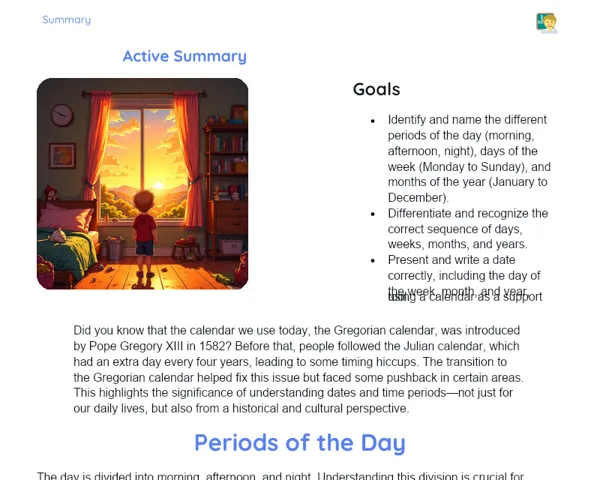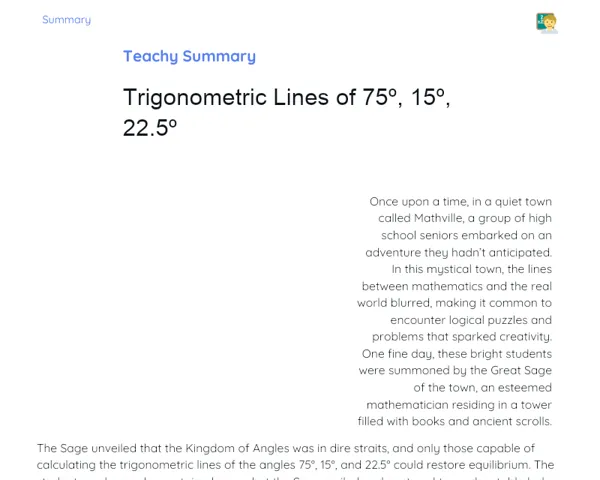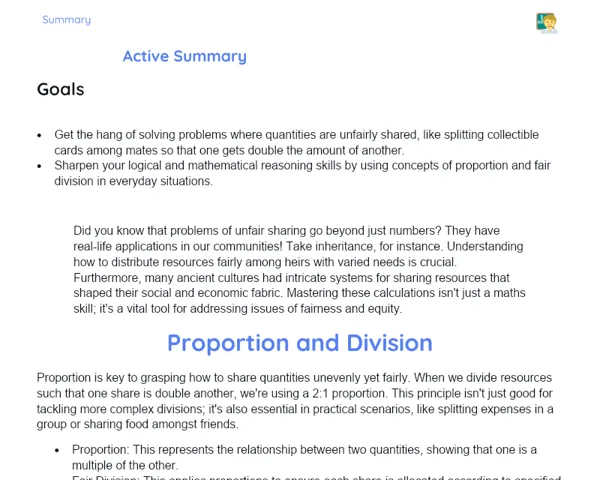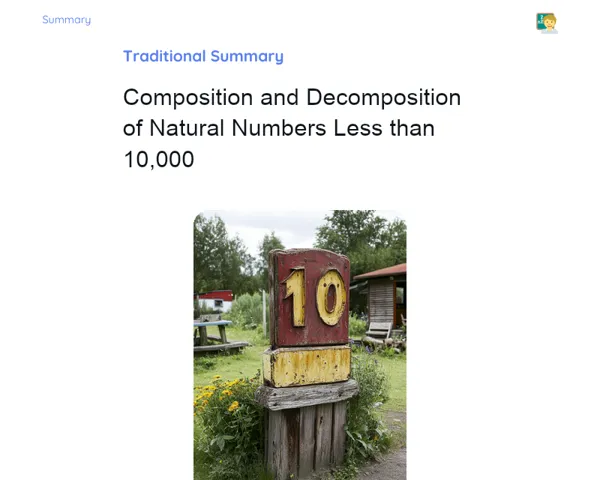Socioemotional Summary Conclusion
Goals
1. Grasp the concept of inverse proportionality and how it applies to mathematical challenges.
2. Identify and solve problems that involve quantities that are inversely proportional.
3. Cultivate socio-emotional skills such as resilience and teamwork.
Contextualization
🌍 Picture yourself leading a charity drive to distribute food! The more helping hands you have, the less work each volunteer needs to do. Conversely, with fewer volunteers, everyone has to put in extra effort. This relationship exemplifies inverse proportionality. Grasping these connections not only assists in daily scenarios but also fosters essential problem-solving and critical thinking abilities. 🌱
Exercising Your Knowledge
Understanding Inverse Proportionality
Inverse proportionality helps tackle problems where two quantities are connected in such a way that when one increases, the other decreases at the same rate. This concept is crucial for navigating everyday life, whether it's dividing tasks within a group or figuring out travel times. You'll soon recognise these connections and apply the right solutions through regular practice.
-
Inversely Proportional Quantities: As one quantity increases, the other decreases. For instance, more workers mean less time to finish a task.
-
Inverse Proportion: The product of two inversely proportional quantities remains constant. If one doubles, the other halves.
-
Problem Solving: This involves establishing a proportion and solving a straightforward equation, enhancing logical reasoning and critical thinking.
Practical Problem Example
Let’s break it down with a real-world scenario. Imagine 4 workers can finish a task in 6 hours. How many workers would you need to complete the same task in 3 hours? The solution lies in identifying the quantities, setting up the inverse proportion, and solving the equation. This not only applies mathematical techniques to real life but also teaches patience and resilience when facing challenges.
-
Identifying the Quantities: Determine which quantities are inversely related—here, it's 'number of workers' and 'time'.
-
Setting Up the Inverse Proportion: Formulate the inverse equation (4 workers x 6 hours = n workers x 3 hours).
-
Solving the Equation: Work out the equation to find the unknown quantity (n = 8). Developing this skill strengthens your logical and analytical skills.
Using Analogies for Clarity
Using analogies can make learning smoother and more enjoyable. Think of a balloon: when you push one side in, the other side puffs out. This image can help illustrate how quantities behave inversely. Such analogies not only enhance understanding but also make learning more engaging and less daunting.
-
Air Balloon: Pushing one side in leads to the other side expanding, demonstrating the inverse relationship.
-
Two-Plate Scale: Adding weight to one side causes the opposite side to lift, showcasing inverse proportionality.
-
Mental Mazes: Analogies simplify complex ideas, boosting confidence and mental clarity.
Key Terms
-
Inverse Proportionality: Technique for addressing problems where two quantities are inversely correlated.
-
Inverse Relationship: A scenario in which increasing one quantity results in a decrease in the other by the same proportion.
-
Inverse Proportion: An equation showing the constant relationship between two inversely proportional quantities.
For Reflection
-
How can you use inverse proportionality in daily life beyond the examples given? Share a specific situation.
-
Think back to a time when tackling a math problem was frustrating. How did you manage that feeling? What might you approach differently with your newfound knowledge on resilience?
-
How did working with your classmates during the group task aid in solving the problem? What social skills do you think you gained or need to work on?
Important Conclusions
-
Inverse proportionality is an indispensable tool for resolving issues where two quantities are inversely linked.
-
Comprehending these relationships allows for practical solutions to everyday problems and cultivates logical reasoning and critical thinking skills.
-
Beyond academic knowledge, practising inverse proportionality enhances socio-emotional abilities like resilience and teamwork.
Impacts on Society
Grasping inverse proportionality significantly impacts our daily experiences. From managing group projects to organising events, understanding how one quantity inversely affects another streamlines problem-solving. For instance, calculating the right number of team members needed to finish a task quicker leads to better job distribution, enhancing both effectiveness and productivity. This not only boosts individual performance but also strengthens team dynamics, creating a culture of collaboration and efficiency.
Furthermore, honing socio-emotional skills like resilience and teamwork through mastering inverse proportionality equips you to tackle emotional hurdles. When faced with intricate problems that induce frustration, being able to acknowledge those feelings and work through them can simplify your problem-solving process. Resilience keeps you motivated and focused, while collaboration with peers enriches understanding and fosters collective problem-solving, giving even greater emotional significance to your mathematical education.
Dealing with Emotions
To apply the RULER method at home, take a few moments after studying to reflect on your emotions. First, identify how you felt during your study session—was it frustrating, tough, or satisfying? Consider what sparked those emotions, possibly the struggle with a problem or the relief of working out a solution. Accurately label those feelings, like anxiety or happiness. Share your emotions in a journal or chat with a friend about your experience. Finally, manage those feelings using deep breathing or planned breaks to help you stay composed and focused during your studies.
Study Tips
-
Consistently practice various types of inverse proportionality problems to reinforce your understanding.
-
Collaborate in study groups when possible; working with peers can provide fresh perspectives and creative solutions.
-
Employ analogies and visual aids to better grasp abstract concepts of inversely proportional quantities, making learning lighter and more enjoyable.



